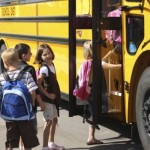My mask helps you and your mask helps me.
While masks are still controversial and even politically divisive, the CDC and the WHO have reiterated their importance in being the best prevention against COVID. Masks provide what’s called “source control” which helps prevent the spreading of respiratory droplets from coughing, sneezing, and talking. Masks are a critical part of a safe return-to-learn in-person plan.
My school is returning to in-person learning in a few weeks after a full quarter of virtual learning. We’re gearing up to teach all the safety protocols—sanitizing hands and surfaces, eating breakfast and lunch in the classroom, recess zones, traveling cohorts, and of course masks.
As important it is to teach mask-wearing, it is just as important to acknowledge (and then work around) the barriers masks pose. Since 70% of communication is nonverbal, where does that leave us with masks covering half our faces? It hides facial expressions, it muffles sound, it’s uncomfortable. Simply put, It impedes verbal and nonverbal communication. What do we do about this?
Well, we’re starting with practice.
This week, all our teachers are teaching their online classes about the importance of mask-wearing. They’ll be putting on masks during the online lesson. This will allow the students to get comfortable seeing their teachers and peers in masks since they’ve been literally face-to-face in online meetings for weeks. This also gives everyone a chance to talk about the problem of masks. It’s is as clear as the nose on your face—we can’t see your face!
Here are a few ways to rethink the challenges of mask-wearing at school:
Masks block your smile.
- Smile bigger! How big does your smile need to be to reach your eyes? Crinkly eyes are friendly eyes!
Masks muffle your voice.
- Talk louder and clearer. Enunciation is our friend!
Masks make your ears stick out.
- It’s nice to meet another fan of elf culture.
Masks fog up your glasses.
- Yeah, this one just sucks.
Masks are hot inside.
- At least you don’t have to worry about bad breath.
Rather than seeing masks as a political statement or an endorsement of science vs. fear, I see masks as a symbol of human connection. Mask-wearing is a shared experience. Just like uniforms or school colors signify unity, masks represent that we’re all part of the same team—the same human family. We all breathe the same air and feel the same feelings. Masks don’t have to be a barrier. They are literally making us safer and allowing us to be closer than we have been in months. And that’s nothing to sneeze at.










Comments 4
Thank you for this post. I enjoyed reading about the importance of seeing this not as a mask, but having it as a way to say, “I’m with you.” I care about my community and I’m supporting the health of my entire community is an important message.
Well said, Randi! Teaching our kids why we wear masks, and that we all experience the same problems, is a wonderful idea.
I love this Randi! Totally Agree. Be a good neighbor.
Coaching swimming in my mask means I’ve started signing a lot more. I usually talk with my hands a ton, but we’ve created a whole new language for swim. The kids know what I’m signaling and I save my voice a little bit.